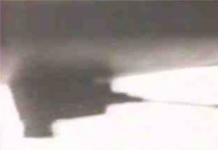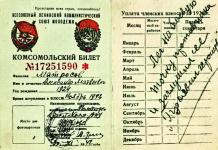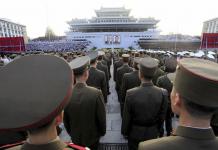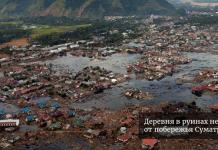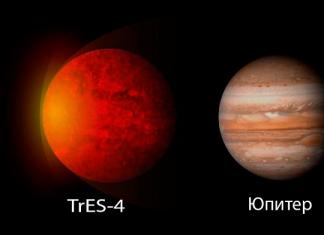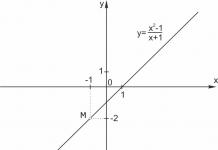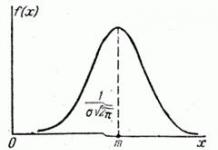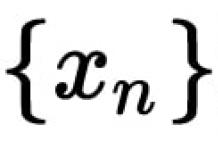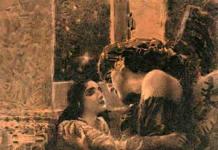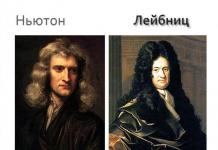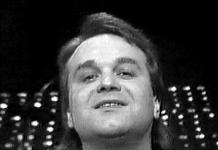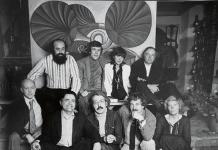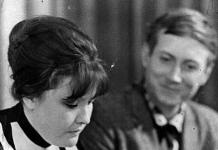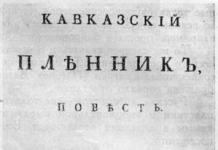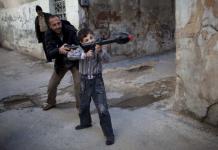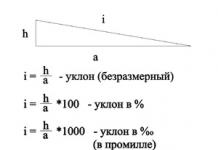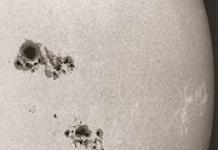Sometimes history allows itself to do quite extraordinary things. For example, it endows the commander with immortality not for a brilliant victory, but for the defeat and death suffered, although it was an example of a true manifestation of officer honor, but did little to defeat the enemy. One of these heroes of the past was General Alexander Vasilyevich Samsonov, short biography which formed the basis of this article.
The firstborn in the family of a retired lieutenant
After retiring, lieutenant Vasily Vasilyevich Samsonov settled with his wife Nadezhda Yegorovna in the Kherson province, where they had their own estate. On November 14, 1859, a son was born in their family, who was given the name Alexander in holy baptism. Samsonov dreamed of a military career for his first-born, and therefore, upon reaching the required age, he arranged him for the Kyiv Vladimir Military Gymnasium, and after graduating from it, for the St. Petersburg Nikolaev Cavalry School. From the Kyiv chestnuts, the young man went to the banks of the Neva.
Alexander Vasilievich Samsonov, whose date of birth fell on the period when Russia, having been defeated in the Russian-Turkish war of 1853-1856, was rapidly increasing its combat power and striving to regain its former glory, it was not by chance that he chose his path in life. In those years, officers enjoyed special honor in society, and serving in the army was a matter of honor for every nobleman.
First battles and career growth
He was barely eighteen when, after graduating from college and being awarded the title of cornet, Samsonov first came under fire from the battles of the Russian-Turkish war (1877-1878). It was as a result of the heroism shown by him during this military campaign, and not because of class privileges, that the young officer Alexander Vasilyevich Samsonov received the right to enter the General Staff Academy.

The years that followed the end of his studies at the academy became the steps for the rapid career growth of an honest and executive officer. The cities changed, the military districts where Samsonov had a chance to serve changed, but invariably he was among the most valued, and, accordingly, promoted commanders.
Battles in the Far East
The Russian-Japanese war met already in the rank of Major General Alexander Vasilyevich Samsonov. Photos of the officer began to appear on the pages of newspapers. He, as an experienced commander, was instructed to lead the Ussuri Cavalry Brigade, which on May 17, 1905, in a bloody battle near Yudzyatun, destroyed a squadron Japanese troops. In the next major battle of this war, which took place soon near Vafangou, Samsonov's Cossacks managed to bypass the Japanese division and, striking from the rear, decided the outcome of the operation.
In the future, the general happened to become a participant in almost all the most significant episodes of the war that unfolded on land. Under his command, the Cossacks attacked the enemy near Gaizhou, Tashichao and Liaoyang. When a turning point occurred in the course of the war, and the Russian troops were forced to retreat, the Cossack regiments subordinate to the general, together with the horse battery, covered their withdrawal, holding back the enemy with all their might. For merits during this campaign, Alexander Samsonov was awarded three military orders, a golden saber and promoted to lieutenant general.

Between two wars
First post-war years General Alexander Samsonov, who by that time had already become one of the most prominent Russian military leaders, occupied a number of command posts in the leadership of the Warsaw Military District and then was appointed Ataman of the Don Cossacks. Everywhere he performs the duties assigned to him with his characteristic energy and conscientiousness. In May 1909, the sovereign ordered him to leave for Turkestan to take up the post of governor-general of the region, and in addition, the commander of the Turkestan military district and the ataman of the Semirechensk Cossack army.
In administrative work, Alexander Vasilyevich managed to show the same outstanding abilities as in military affairs. He managed to largely stop the conflicts that arose on ethnic grounds between the local population and the Russians, most of whom were military.
In addition, he launched a wide educational activity among the inhabitants of Turkestan, the vast majority of whom were illiterate. And a special merit can be called the initiative to create irrigation systems, which made it possible to establish the cultivation of cotton. His works were duly appreciated by the sovereign. Samsonov was promoted to general from the cavalry.

The start of a new war
First World War found Samsonov in the Caucasus, where he rested with his family. Together with the message about Russia's entry into a new massacre, Alexander Vasilyevich received an order to urgently arrive in Warsaw, where he was waiting for the post of commander of the Second Army. The general command of the Northwestern Front was carried out by General Zhilinsky.
According to his plan, the Second Army of Samsonov and the First Army, led by General P. Rannenkampf, were to go on the offensive, which is part of the overall East Prussian operation. Despite the fact that the commanders of both armies pointed out the need for careful preparation for such large-scale military operations, orders were received from the Headquarters and personally from the commander of the troops, Grand Duke Nikolai Nikolayevich, for an immediate action.
The reason for such haste was the difficult situation in which Russia's allied France found itself, and the personal appeal of Ambassador M. Paleolog to Nicholas I, in which he literally begged the Russian monarch to immediately order the offensive and prevent the defeat of their army. As a result, Alexander Vasilyevich Samsonov, a cavalry general and an experienced commander, was forced to launch an offensive, the failure of which he was sure in advance.

Deadly March
At that time, the forces of the Eighth German Army were concentrated, and it was precisely for its destruction, according to the disposition, that two Russian armies advanced. The troops under the command of P. Rannenkampf were the first to enter the battle with the enemy. Launching their attack at dawn on 4 August, they forced the Germans to retreat. At the same time, Samsonov's army made a powerful forced march, covering eighty kilometers in three days and entering the territory of East Prussia.
Such a swift maneuver, dictated by tactical considerations, was extremely dangerous for the Russian army. On the territory devastated by the war, the advanced units significantly broke away from the rear convoys with food and ammunition. As a result of this, people have been starving for several days, and cartridges and shells have run out. The horses were left without food. But, despite repeated reports of a catastrophic situation, the high command demanded not to slow down the pace of the offensive.
On the eve of the encirclement
Suddenly, another danger became apparent. On the way, the Second Army did not meet serious resistance, and it seemed that the enemy was deliberately creating conditions for them to advance unhindered. Experienced commander Alexander Vasilievich Samsonov, whose biography with early years connected with the army, intuitively felt the impending trap.

He shared his fears with the commander of the North-Western Front, Zhilinsky. However, due to incompetence, not sufficiently realizing the seriousness of the situation, he gave a number of orders that aggravated the already difficult situation in which Samsonov's troops found themselves.
Premonition did not deceive the experienced commander. German command, using an extensive network railway tracks, created in the prewar years, transferred a significant military contingent to the Second Army area. On August 13, the Sixth Corps, located on the right flank, was attacked and defeated, and the next day, on the left flank, the First.
Defeat of the Second Army
In the current critical situation, Alexander Samsonov personally comes to the front line, wanting to raise the morale of the troops, but, having studied the situation, he understands the hopelessness of the situation. The last hope was to support the army of P. Rannenkampf. Joint actions aimed at connecting with it could save the units entrusted to Samsonov from complete encirclement and death, but the commander of the First Army, having shown criminal slowness, did not fulfill his task.
As a result, three Russian corps, with a total number of one hundred thousand people, were surrounded. Participants in those events recalled that the vast majority of soldiers and officers were demoralized. The awareness of impotence to influence the situation, the extreme exhaustion caused by a many-day march through enemy territory, and physical weakness from prolonged starvation also had an effect. Most of them subsequently died, and only a small part was able to escape from the enemy ring.

court of conscience
The consciousness of personal responsibility for the failure of the operation entrusted to him and the death of people who wholeheartedly believed him caused a severe mental trauma that Samsonov could not cope with. On August 30, 1914, that is, just a month after the start of the war, he committed suicide. Eyewitnesses said that on that day the general, unexpectedly for everyone, retired to the forest, from where a shot was soon heard.
Ironically, who so unfavorably disposed of the end of the life of this worthy man, the honest Russian officer Alexander Vasilyevich Samsonov, the photo of the last months of his life completes the article, remained in the memory of his descendants not as a winner who fanned himself with swearing glory, but as an example of how a person administers a sentence over himself the highest court - one's own conscience.
Samsonova, A.V. Substantiation of the mechanisms of human skeletal muscle hypertrophy from the standpoint of a systematic approach //Mat. Intern. Scientific Conference "Problems of sports kinesiology. - Malakhovka, 2009. - S. 28-31
Introduction
Already in the middle of the 20th century, rehabilitation medicine established the fact of a rapid restoration of the mass and strength of skeletal muscles after their atrophy through training using significant external weights. Training with low weights, which were repeated many times, did not cause such an effect (A.J. McComas, 2001).
The pattern found empirically is currently actively used in athletics (A.N. Vorobyov, 1988; A.S. Medvedev, 1998; A. Schwarzenegger, 2003; L.S. Dvorkin, 2005, V.M. Zatsiorsky, W.J. Kraemer, 2008; G.P. Vinogradov, 2009). However, until now there is no concept explaining the mechanisms of hypertrophy when performing strength exercises with heavy weights.
Objective was to develop the concept of skeletal muscle hypertrophy from the standpoint of a systematic approach.
results
The systematic approach used in this article is based on the description of the phenomenon of muscle hypertrophy during training with heavy weights from the standpoint of various scientific disciplines: histology, anatomy, physiology, biochemistry, sports medicine and biomechanics.
From anatomy It is known that skeletal muscles are composed of muscle fibers. Muscle fibers are divided into slow ( I type) and fast ( IIA and IIB type). The main function of the fibers I type- performing long-term low-intensity work. They are characterized by low speed and force of contraction. However, their ability to resist fatigue is very high. Muscle fibers IIB type able to contract with great force and speed. However, their resistance to fatigue is low. fibers IIA type have intermediate properties.
The basis of the contractile apparatus of the muscle fibers of human skeletal muscles is myofibrils, which in turn consist of sarcomeres. Sarcomeres are connected to each other by means of Z-discs. Inside the sarcomere is the M-disk. Sarcomeres are made up of thick and thin filaments. The basis of thick filaments is the protein myosin, thin - actin. Thin filaments are attached to the Z-disk, thick - to the M-disk (Fig. 1).
Rice. 1. Scheme of the structure of the sarcomere
(after: G.H. Pollak, 1990)
During muscle contraction, thin filaments slide relative to thick ones, the distance between the Z-discs decreases, and the length of the sarcomere is shortened. Simultaneous contraction of all sarcomeres leads to a decrease in the length of the myofibril and muscle fiber. Due to the fact that the sarcomere is not flat, but bulk structure, with its contraction, there is also an increase in its cross-sectional area (when thin threads enter the gaps between thick ones), the cross-sectional area of \u200b\u200bmuscle fibers and the entire muscle.
To understand the mechanism of hypertrophy, the facts established by histologists. In muscle fibers of different types, the thickness of the Z- and M-disks is different. slow fibers I type have thicker Z-discs compared to fibers II type(H. Hoppeler, 1986; V. L. Bykov, 1998). The same is true for M-discs, which are wider in the fibers. I type compared to fibers II type(A.J. McComas, 2001).
Physiologists it was found that the control of the muscle by the central nervous system is carried out through the activation of motor units (MU). According to the classification of R. Burke et al. (R.E. Burke et all. 1973) MUs are divided into three types: S(slow) - slow, resistant to fatigue; FR(fast resistant) - fast, resistant to fatigue, FF- fast fatigable - fast, fatigued. DE of various types correspond different kinds muscle fibres.
The composition of motor units type S includes muscle fibers I type type FR – IIA type. The composition of motor units type FF- includes muscle fibers IIB type. The structure and functions of the motor neuron correspond to the morphological characteristics of the muscle fibers that it innervates. So motor neuron DE type S has a small cell body and innervates from 10 to 180 muscle fibers, and motor neuron DE type FF- has a large cell body and innervates from 300 to 800 muscle fibers (J. Wilmore, D. L. Costill, 1997).
The number of MUs active in the process of muscle contraction is determined by the central and reflex mechanisms of muscle strength regulation (A.G. Feldman, 1979). It has been established that there is a stable procedure for the involvement (recruitment) of MUs: first, MUs are recruited S type, then FR type, the last ones involved in the reduction are DU FF type(E. Henneman, C. B. Olson, 1965). If the external resistance is small (less than 20% of 1RM) only muscle fibers are recruited Type I at the same time, the level of strength developed by the muscle is low (V.S. Gurfinkel, Yu.S. Levik, 1985). To overcome large external resistance (more than 70% of 1RM) the muscle must develop greater strength. Therefore, the reduction is consistently involved all types of muscle fibers, including IIB type(Fig. 2).
Fig.2. The structure of involvement in the work of slow and fast muscle fibers (according to: J.H. Wilmore, D.L. Costill, 1997)
Specialists in the field sports medicine it was found that training with the use of heavy weights causes muscle pain in athletes, both during and after its completion (B.I. Prilutsky, 1989; V.I. Morozov, G.A. Sakuta, M.I. Kalinsky, 2006; G.A. Makarova, 2008). There are several hypotheses about the nature of pain in the muscles. So, the factors that cause muscle pain are called: damage to myofibrils and muscle fibers; connective tissue damage; accumulation of metabolic products in the muscle, including lactic acid; localized DE spasm. However, as M.J. Alter (2001) points out, a sufficient number of facts have now been accumulated, indicating that pain in the muscles is primarily associated with their damage, fig.3.
Fig.3. An electronic photograph of a human muscle fiber after performing eccentric exercises. Designations: * - myofibrils with destroyed Z-disks; ○ – myofibril with intact Z disk. For: J.G.Yu, L.Carlsson, L.E. Thomell, 2004.
It has been established that mechanical damage to muscle fibers is more significant in the eccentric mode of muscle contraction (J. Friedén, M. Siöström, 1983; B. Ekblom J. Fridén, R. L. Lieber, 1992; M. J. Gibala et all., 1995; E. Hagbie et all. ., 1996; T.N. Shepstone et all., 2005). So, according to M.J. Gibala et all., (1995), performing hypertrophic strength training (8 sets with 8 repetitions and an external load of 80% of 1 RM) in the eccentric mode of muscle contraction leads to damage to 82% of muscle fibers, in the concentric mode - only 33%.
FROM biomechanical point of view, the mechanism of damage to muscle fibers can be explained as follows. When performing strength exercises with heavy weights in the eccentric mode, the internal forces arising from the interaction of thick and thin filaments tend to reduce the length of the sarcomere, and, consequently, the entire contractile component of the muscle. However, under the influence of an external force, the length of the muscle increases. This nature of work can lead to rupture and damage to myofibrils and muscle fibers (A.J. McComas, 2001).
It has been found that more severe damage is found in the fibers II type(J.Frieden, M.Siostrom, B.Ekblom, 1983), which give the maximum increase in the cross-sectional area of the muscle. We assume that this is due to the fact that the myofibrils of the fibers II type are thinner than fibers I type Z- and M-discs, which are more easily damaged. The consequence of this is the rupture of myofibrils and muscle fibers.
Muscle fiber damage is seen in biochemical level: cytoplasmic and structural proteins(A.J. McComas, 2001). By their number, one can assess the degree of muscle damage (V.I. Morozov, G.A. Sakuta, M.I. Kalinsky, 2006). According to researchers, the most informative markers of damage are the level of activity of the enzyme creatine kinase and the concentration of myoglobin in plasma or serum. It has been shown that after eccentric exercise, the level of creatine kinase in the blood increases from 5 to 10 times (A.J. McComas, 2001). Research by M. Guerrero et all. (2008) indicate that with muscle damage of the first degree (the most insignificant), the concentration in the blood of the fast form of the enzyme myosin-ATP-ase (“fast” myosin) is twice as high as the slow (“slow” myosin). The fast form of the enzyme myosin-ATP-ase is inherent in fibers II type, slow - fibers I type. This confirms the hypothesis that fibers II type damaged more easily than fibers I type.
Damage to muscle fibers and myofibrils leads to the launch of regeneration processes, in which satellite cells play an important role (A.N. Studitsky, 1972; A.J. McComas, 2001; V.I. Morozov, G.A. Sakuta, M.I.Kalinsky, 2006; K.Shortreed, A.Johnstom, T.J.Hawke, 2007). The result of regeneration processes is increased protein synthesis and muscle hypertrophy (A.J. McComas, 2001; T.R. Baechle et all., 2008; V.M. Zatsiorsky, W. J, Kramer, 2008).
Conclusions and conclusion
The article proposes systems approach to the problem of the influence of training with heavy weights on the hypertrophy of the skeletal muscles of athletes. Histologists found that fibers II type are thinner than muscle fibers I type Z- and M-disks. We assume that due to these features of the fiber II type more easily damaged. This hypothesis is confirmed by the studies of J. Frieden, M. Siostrom, B. Ekblom (1983), which showed that when performing eccentric muscle contractions on a bicycle ergometer, stronger damage is found in the fibers II type. biochemical Studies have shown that in case of muscle injuries of the first degree, the concentration of “fast” myosin in the blood is twice as high as that of “slow” one (M. Guerrero et all., 2008). Since "fast" myosin is a specific marker of muscle fibers II type, which indicates their greater damage.
The hypothesis of mechanical damage to muscle fibers and their subsequent regeneration is confirmed by the facts obtained by representatives sports medicine about the presence of painful sensations in the muscles when performing strength exercises with heavy weights during and after the end of the training session (DOMS syndrome).
Physiological The “size principle” explains why heavy weight training results in significant skeletal muscle hypertrophy. The main factor is involvement all types of DU and especially FR and FF type containing muscle fibers II type. These muscle fibers are more easily damaged. Damage to muscle fibers triggers regeneration processes that lead to muscle hypertrophy. biomechanical Analysis of the process of sarcomere contraction makes it possible to understand how Z- and M-disks are damaged during training with large external weights.
Literature
1. Alter, M.J. The science of flexibility [Text] / M.J. Alter. - Kyiv: Olympic Literature, 2001. - 421 p.
2. Bykov, V.L. Cytology and general histology [Text] / Bykov, V.L.// St. Petersburg: SOTIS, 1998.
3. Vinogradov, G.P. Athleticism: Theory and methodology of training [Text]: A textbook for higher educational institutions/ G.P. Vinogradov // M.: Soviet Sport, 2009.– 328 p.
4. Vorobyov, A.N. Weightlifting [Text] / Vorobyov A.N.// M .: Physical culture and sport, 1988.
5. Gurfinkel, V.S. Skeletal muscle. Structure and function [Text] / V.S. Gurfinkel, Yu.S. Levik // M.: Nauka, 1985.– 142 p.
6. Dvorkin, L.S. Weightlifting [Text]: Textbook for higher educational institutions / L.S. Dvorkin // M.: Soviet Sport, 2001.– 600 p.
7. Makarova, G.A. Sports medicine: Textbook [Text] / Makarova G.A.// M.: Soviet sport, 2008.– 480 p.
8. McComas, A. J. Skeletal muscles. Structure and functions [Text] /A. J. McComas // Kyiv: Olympic Literature, 2001.– 407 p.
9. Medvedev, A.S. The problem of further improvement of the methods of training weightlifters on present stage[Text] / A.S. Medvedev // Theory and practice physical education, 1998.– No. 6.– S.
10. Morozov, V.I. Morphological and biochemical aspects of damage and regeneration of skeletal muscles during physical exertion and hypodynamia / V.I. Morozov, G.A. Sakuta, M.I. Kalinsky // Morphology, 2006. 88-96.
11. Prilutsky, B.I. Muscle pain caused by unusual physical exercises [Text] / B.I. Prilutsky // Theory and practice of physical culture, 1989.– No. 2.– P. 16-21
12. Studitsky, A.N. Muscular tissue [Text] / In the book: Histology / Ed. V.G.Eliseeva // M.: Medicine, 1972.– P. 210-223
13. Schwarzenegger, A. Encyclopedia of modern bodybuilding [Text] / A. Schwarzenegger; Per. from English.// T.3. // M.: Physical culture and sport, 2003.– 152 p.
14. Wilmore, J. Physiology of sports and physical activity [Text] // J. Wilmore, D.L. Kostil // Kyiv: Olympic Literature, 1997.– 503 p.
15. Feldman, A.G. Central and reflex mechanisms of motion control [Text] // A.G. Feldman.– M.: Nauka, 1979.– 181 p.
16. Baechle, T.R. Resistance Training // In: Essentials of Strength Training and Conditioning / T.R.Baechle, R.W. Earle, D.Wathen: Human Kinetics, 2008.– P.382-412.
17. Burke, R.E. Physiological types and histochemical profiles in motor units of the cat gastrocnemius / R.E. Burke D.N. Levine, P Tsaris., F.E. Zajac // Journal of Physiology, 1973.- V. 234.- P.723-748.
18. Friedén, J. Myofibrillar damage following intense eccentric exercise in man / J. Friedén, M. Siöström, B. Ekblom // International Journal of Sport Medicine, 1983.– Aug;4(3).– P.170-176 .
19. Fridén, J. Structural and mechanical basis of exercise-induced muscle injury. /J.Friden, R.L. Lieber.// Med. sci. Sports Exerc. 1992 May; 24(5):521-530.
20. Gibala, M.J. Changes in human skeletal muscle ultrastructure and force production after acute resistance exercise // M.J. Gibala, J.D. MacDougall, M.A. Tarnopolsky, W.T. Stauber, A. Elorriaga // Journal Applied of Physiology, 1995.– V.78.– P. 702-708 .
21. Guerrero, M. Fast and slow myosins as markers of muscle injury /M. Guerrero, M. Guiu-Comadevall, J. A. Cadefau, J. Parra, R. Balius, A. Estruch, G. Rodas, J. L. Bedini, R. Cussó// British Journal of Sports Medicine, 2008.– V.42.– P .581-584.
22. Henneman, E. Relations between structure and function in the design of skeletal muscle /E.Henneman, C.B.Olson // J. Neurophysiology, 1965. - V.28.- P.581-589.
23. Higbie, E.J. Effects of concentric and eccentric training on muscle strength, cross-sectional area, and neural activation / E.J.Higbie, K.J.Cureton, G.L.III Warren., B.M.Prior // Journal of Applied Physiology, 1996.– V.81.– N 5. – P. 2173-2181.
24. Hoppeler H. Exercise-induced ultrastructural changes in skeletal muscle / H. Hoppeler // International Journal of Sport Medicine, 1986.– V.7.– P.187-204.
25. Pollack G.H. Muscles & molecules: Uncovering the principles of biological motion. / G.H. Pollack // Seattle: Ebner&∓Sons, 1990.
26 Shepstone, T.N. Short-term high vs. low-velocity isokinetic lengthening training results in greater hypertrophy of the elbow flexors in young men /T.N. Shepstone, J.E.Tang, S.Dallaire, M.D.Schuenke, R.S.Staron, S.M.Phillips // Journal Applied of Physiology.–2005.–V.98.–P.1768-1776.
27. Shortreed, K. Satelite Cells and Muscle Repair / In: Skeletal Muscle Damage and Rapair / Ed. P.M.Tiidus, A.Johnstom, T.J.Hawke. - Human Kinetics, 2007. - P.77-88.
28. Yu, J.G. Evidence for myofibril remodeling as opposed to myofibril damage in human muscle with DOMS: An ultrastructural and immunoelectron microscopic study / J.G.Yu, L.Carlsson, L.E. Thomell //J. Histochem. Cell Biol., 2004.- 121 (3): 219-227.
29. Zatsiorsky, V.M. Science and Practice of Strength / V.M. Zatsiorsky, W.J. Kramer // Sec. editing: Human Kinetics, 2006.– 251 p.
1 RM is the weight of the load (external resistance) that the athlete is able to lift only once
Name: human skeletal muscle hypertrophy
Samsonova A.V.
The year of publishing: 2012
The size: 8.3 MB
Format: pdf
Language: Russian
"Hypertrophy of human skeletal muscles" ed., Samsonova AV, considers skeletal muscles against the background of their mass increase against the background of physical training. Existing problems of muscle hypertrophy are outlined. Their changes are described structural level, as well as their influence on everyday life against the backdrop of daily exercise. Changes affected biochemical processes in muscle tissue, changes in its biomechanics, physiology, histological structures.
This book has been removed at the request of the copyright holder.
Name: Human physiology. Atlas of dynamic schemes. 2nd edition
Sudakov K.V., Andrianov V.V., Vagin Yu.E.
The year of publishing: 2015
The size: 10.04 MB
Format: pdf
Language: Russian
Description: The presented textbook "Human Physiology. Atlas of Dynamic Schemes" edited by K.V. Sudakova, in her supplemented and corrected 2nd edition, considers such issues of normal physiology ... Download the book for free
Name: Human physiology in diagrams and tables. 3rd edition
Brin V.B.
The year of publishing: 2017
The size: 128.52 MB
Format: pdf
Language: Russian
Description: AT study guide"Human Physiology in Diagrams and Tables", ed., Brin V.B., discusses issues general physiology, physiology of organs and their systems, as well as the features of each of them. The third of ... Download the book for free
Name: Physiology of the endocrine system
Pariyskaya E.N., Erofeev N.P.
The year of publishing: 2013
The size: 10.75 MB
Format: pdf
Language: Russian
Description: The book "Physiology of the endocrine system" edited by Pariyskaya E.N.
Name: Physiology of the central nervous system
Erofeev N.P.
The year of publishing: 2014
The size: 17.22 MB
Format: pdf
Language: Russian
Description: The book "Physiology of the Central Nervous System", edited by N. P. Erofeev, considers the principles of organization and functions of the central nervous system for controlling movements, regulating movements and muscle ... Download the book for free
Name: Clinical Physiology in Intensive Care
Shmakov A.N.
The year of publishing: 2014
The size: 16.97 MB
Format: pdf
Language: Russian
Description: The textbook "Clinical Physiology in Intensive Care", ed., Shmakov A.N., considers the issues of clinical physiology of critical conditions in pediatrics. The questions of the age f... Download the book for free
Name: Physiology higher nervous activity with the basics of neuroscience. 2nd edition.
Shulgovsky V.V.
The year of publishing: 2008
The size: 6.27 MB
Format: djvu
Language: Russian
Description: The presented textbook "Physiology of Higher Nervous Activity with the Basics of Neurobiology" considers the basic issues of the topic, including such aspects of the physiology of GNA and neurobiology as the history of research ... Download the book for free
Name: Fundamentals of the physiology of the heart
Evlakhov V.I., Pugovkin A.P., Rudakova T.L., Shalkovskaya L.N.
The year of publishing: 2015
The size: 7 MB
Format: fb2
Language: Russian
Description: Practical guide"Fundamentals of Physiology of the Heart" ed., Evlakhov V.I., et al., considers the features of ontogenesis, anatomical and physiological features. principles of heart regulation. It is stated but ... Download the book for free
Name: Physiology in figures and tables: questions and answers
Smirnov V.M,
The year of publishing: 2009
The size: 10.2 MB
Format: djvu
Language: Russian
Description: The book "Physiology in Figures and Tables: Questions and Answers" edited by Smirnov V.M., et al., considers the course of normal human physiology in an interactive form in the form of questions and answers. Described...

